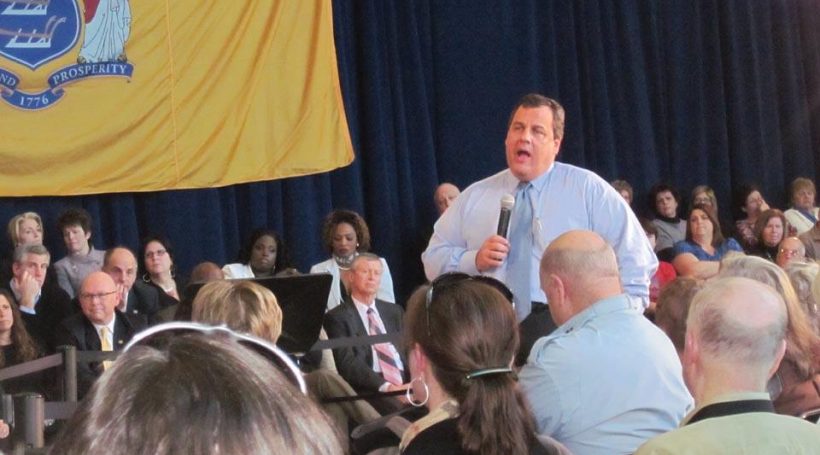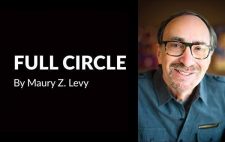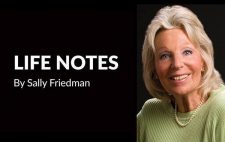In Cherry Hill, recognized for its high-performing schools, a new elementary school focused on real-life learning and technology is readying for its September opening.
But instead of embracing Regis Academy for offering families a new public education option, the school district, mayor and hundreds of residents are doing everything in their power to see that the new program – a charter school – never opens.
The fierce objection is largely a financial one. Just two years after recessionary pressures forced Cherry Hill to eliminate 100 jobs, cut enrichment programs and increase class sizes, district boosters object to surrendering $1.9 million – the equivalent of 29 teacher salaries – to Regis, based on projections that 169 children will leave district schools to enroll in the new charter school. Regis plans to recruit another 81 students from nearby Voorhees, Lawnside and Somerdale districts, which also must forfeit substantial funds. Cherry Hill and Voorhees have joined forces in a high-profile challenge of the charter school in state appellate court. A decision may not be rendered until well into the next school year.
Moreover, opposition leaders say they are enraged they were never asked if they wanted a new school in their midst, especially when the towns’ traditional schools consistently rank among the best in the state and at a time when a soft economy is still forcing schools to make do with less.
“As a Cherry Hill resident, I have more input into how large the sign will be on a local gas station than in whether there will be a charter school in my township,” says Cherry Hill mom Loraine Carapellucci, who testified before the Senate Education Committee in the fall. “This is not a case of parents demanding school choice for their children, but rather that a charter school has been thrust upon us.”
Before this fall – when the township first learned of Regis Academy’s approval – most Cherry Hill residents had little knowledge of New Jersey’s 15-year history of creating public schools that operate independently of local school boards under a charter granted by the Commissioner of Education. For many, charters likely conjured up the image of families seeking refuge from chronically failing, violence-strewn schools in nearby urban areas like Camden and Philadelphia. But according to the law, these independent public schools are meant to foster innovative approaches to education that will benefit all public-school children – not just those languishing in struggling schools.
And in the past few years, since Gov. Chris Christie has made the expansion of charter schools a priority, their growing presence in suburban communities has created a groundswell of opposition. The complaints are heard loudest in small, upscale suburbs including Princeton and Highland Park, where schools with narrow focuses like Hebrew or Mandarin language have recently opened. The host communities have waged battles – some in the court of public opinion and some in the court of law – against these “boutique” schools.
A new organization, Save Our Schools NJ, has called for changes to the charter school law, which they say siphons money from district schools while ignoring local voter preference. And statewide, thousands have put pressure on lawmakers to check charter school growth. Voters have blitzed their legislators with petitions supporting pending legislation for new controls on charter schools, including a bid to give voters final say in allowing a charter school to open in their communities. Such a proposal, critics point out, would likely kill the creation of these upstart schools altogether.
Still, as a result of the backlash, there are signs the Governor is feeling the heat. In an unprecedented move, the administration in December announced that 25 of 42 applications for charter schools did not make it past the first cut in the latest round of charter school approvals. Among the rejected was a hotly contested virtual charter school that, while serving children statewide, would have had its physical presence in Teaneck. The plan sparked mass protest and a legal challenge in Teaneck after the state said the district needed to set aside $15 million in its 2012-2013 budget in case the school was approved.
Christie has also publicly stated his preference that charter schools be placed “predominantly, if not exclusively” in failing school districts.
For all the clamor over charter schools, they still command a relatively small, albeit growing, presence in the Garden State. As of January, there were 80 approved charter schools operating statewide and serving some 26,000 students. By September 2012, the numbers are expected to swell to 100 schools. In addition, some 20,000 children’s names were signed on waiting listings to attend a charter school.
Charter schools receive taxpayer dollars for each student equal to 90 percent of per-pupil funding in the district where the student resides. In the suburbs, the money is drawn primarily from the local tax base while urban districts receive the bulk of funding through state aid. The vast majority of charter schools are concentrated in the cities, where there is less contention over their existence.
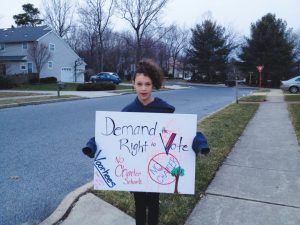

10-year-old Sophie Sable of Voorhees
Freed from district oversight, the schools can offer programs that are different from traditional schools and, their advocates say, more cost effective. The schools tend to have fewer veteran teachers in their ranks and mostly operate without union contracts, explains Priscilla Wohlstetter, a University of Southern California education professor and national charter school expert. Parents are expected to be more involved, not so much to manage the school but to provide enrichment.
In suburbia, she adds, the schools are attractive because they often feature smaller class sizes and attractive curriculum not typically found in traditional schools, such as dual language or Montessori programs.
“Charter schools are getting less money per pupil and educating kids whose parents reside in this district,” Wohlstetter adds. “It’s all about how to provide public education in the most effective way for all kids.”
Whether charters perform better than the traditional public schools is hotly debated. Academics have complained that the state has not released enough meaningful data to measure them against district schools. Last March, on the same day Gov. Christie announced his charter school expansion plan, the U.S. Department of Education released data showing that 79 percent of charter schools outperformed district students on math exams in the state’s poorest districts, and that 69 percent outperformed home district language arts results. But findings from a recent Rutgers survey concluded that “many NJ charter schools, especially those often touted in the media as great success stories, continue to serve student populations that differ dramatically from populations of surrounding schools in the same city.”
Meanwhile, public sentiment about charter schools is mixed. A Rutgers-Eagleton poll recently revealed that a large majority of state residents believe charters do as well or better than traditional public schools. Another Rutgers survey found that 73 percent of adults say voters should be required to approve new charter schools.
While acknowledging rising suburban unrest, Carlos Perez, executive director of the New Jersey Charter Schools Association, notes there has always been opposition to new charter schools.
“It’s something different, and it’s changing the way we look at public education,” says Perez. “But just because there’s opposition to an issue doesn’t mean it isn’t the right thing to do. For me, it’s important to think about where we are and how we think about innovation. At what point in America did we say ‘we’re good enough, and we’re done with innovation?’ Innovation is how you get yourself out of economic challenge. We can’t just say ‘let’s just put a pause on innovation.’”
But critics contend that charter schools can be more cost effective because they typically educate fewer students who have limited English proficiency and special needs. They also say that charters don’t teach the poorest children. Moreover, some charters have high rates of student attrition, with the most challenging students being the likeliest to return to the traditional public schools. The districts are then left with a concentration of the most expensive-to-educate students, but less money for needed programs, says Julia Sass Rubin, a Rutgers University professor of planning and public policy.
“They’re creaming off the easier-to-educate, “ says Sass Rubin, whose daughter attends Princeton Charter School, a high-performing charter school. “It’s bad for public education, and it’s not good for charter schools.”
Moreover, while the charter school movement presents itself as an effort to protect children’s rights, it’s more about ideology and political expediency than improving educational opportunity for all, says Joseph Depierro, dean of the College of Education and Human Services at Seton Hall University in South Orange.
“With the economic turmoil of the last two or three years, we have seen a resurgence in conservatism and a desire to save money,” explains Depierro. “This has resulted in a push for school choice and a diminution of workers’ rights.”
While offering families more choices is ultimately not a bad thing, Depierro says, the way it has been proposed is highly confrontational and political. “I think in the long run we will have more school choice, but whether or not this will improve education for all is questionable,” he adds.
Meanwhile, the well-heeled suburbs have become ground zero for the charter protest movement. The experiences in Highland Park, a small, diverse Central New Jersey district, could be seen as a cautionary tale for Southern New Jersey. With only 1,400 students, high-performing Highland Park sends 18 students to the Greater Brunswick Charter School, which follows a Montessori philosophy. It sends another seven kids to Hatikvah International Academy, an immersion Hebrew language program in East Brunswick. Worries abound about a third Hebrew immersion school proposed for the area.
Last year, the cost to the district in tuition and transportation costs was more than $350,000, the equivalent salaries of six teachers. Due to budget cuts, the district was forced to increase class sizes and employ fewer teacher aids, explains Darcie Cimarusti, a Highland Park stay-at-home mom turned anti-charter school activist.
Although almost five times more kids in Highland Park schools score advanced proficiency in math and language arts than their equivalents at the Greater Brunswick Charter School, more parents chose to send their kids to Greater Brunswick this year after the district was forced to increase kindergarten class size and reduce the number of teacher aides.
“It becomes a catch-22,” says Cimarusti. “The cuts scared a lot of parents, who decided to go to [the charter school]. Although we got some additional funding back this year, and the district did put paraprofessionals back in the classroom and hired an additional kindergarten teacher, the damage was already done.”
Although Highland Park was recently taken off the application as a sending district for Tikun Olam, the proposed Hebrew immersion charter school, the activists are taking no chances. Highland Park was not originally considered a sending district for Hatikvah, the other Hebrew immersion program. However, when the school did not meet enrollment requirements, the state opened it up to Highland Park children. Cimarusti recently presented 2,100 petition signatures and 600 letters of opposition to Tikun Olam to the Department of Education. Although the school’s charter application has already been rejected three times by the state, it recently got a boost when it received a $600,000 planning grant from the United States Department of Education.
“People really believe the hype around charters and think of them as innovative schools limited to failing districts until an application comes to their town,” Cimarusti adds.
In SJ, the four areas named as sending districts for Regis Academy argue that not only is there no need for a charter school serving these districts, but under the newly imposed 2-percent cap on the amount district budgets can increase, some districts will be crippled by the loss of funds.
In Cherry Hill, the $1.9 million drain represents more than 60 percent of its growth. In Voorhees, $727,000 for 63 students is 89 percent of the amount its district budget can grow. And although the $108,063 cost projection for 12 kids in Somerdale may not sound as drastic, the 525-student district can only grow its budget by $66,000 under the 2-percent cap. The amount the district must put aside for Regis is 166 percent of the district’s allowable growth.
“It’s going to borderline cripple us,” says Somerdale Superintendent Dennis Vespe. “I’m not being dramatic. It’s the cold, hard facts. We are now in a deficit before we even order one pencil.”
In Lawnside, the loss is $66,565 for six students. But Superintendent Ronn Johnson is concerned that there are no actual controls as to how many students from each district will actually opt to enroll at Regis.
“It’s very evident that charter schools are moving forward in our state,” says Johnson. “The only thing we can control is the education we can provide for our children here and make sure parents are appreciative of what we offer here.”
Regis Academy
Despite the debate over the opening of the first charter school in Cherry Hill, its founder says he is convinced the school’s program will win over converts.
Rev. Amir Khan, the controversial head of the Solid Rock Worship Center, says students at Regis Academy will receive their own Sprint tablet. Every classroom will be equipped with Blackboard, a multi-media learning platform more prevalent in colleges than elementary schools.
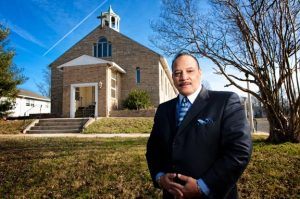

Pastor Amir Khan on the campus of the new Regis Academy in Cherry Hill
“We believe we can bring innovation and technology to children starting in kindergarten,” says Khan, who ran a telecommunications company, among other entrepreneurial ventures, before becoming a pastor. “There are ways advanced technology can be taught in basic formats to make it very interesting, such as opening up devices to see how they communicate from one phone to another or opening up computers to see how they establish a network.”
Notice this fall that Cherry Hill, Voorhees, Somerdale and Lawnside must collectively set aside nearly $2.8 million to fund the new school set into motion a massive outcry from parents, a lawsuit and a storm of media attention. For all that has been exposed about Khan and the state’s quest to create public schools that operate outside district parameters – dubbed laboratories of innovation – little has been written about what will set Regis apart from traditional schools.
On that topic, Khan lights up. The school will follow the nationally recognized Microsociety curriculum, in which children learn about the world by creating their own functioning community. By holding jobs, paying taxes and owning businesses, students master math lessons. Writing skills are honed by creating business proposals and drafting laws. Politics and history take on deeper meaning when the kids themselves draw up a constitution for their society.
The school is a realization of Khan’s dream: that children from relatively higher-income towns like Voorhees and Cherry Hill learn side-by-side with children from poorer areas, such as Somerdale and Lawnside.
At Regis, the school day will start with breakfast at 7:20 am and end with 4 pm dismissal. The year will be longer too: 189 days verses 182 in Cherry Hill. And while Cherry Hill and Voorhees can only offer half-day kinder-garten due to funding and space constraints, Regis kindergarten students will have a full-day program. The school, which takes over the building that formerly housed Holy Rosary Catholic School on Burnt Mill Road, is expected to open with 250 children in kindergarten through fourth grade and expand by 50 each year. It would top out at 450 students in grades kindergarten through eighth grade in five years.
Although teachers have a right to form unions, Khan says there will be no union presence in the new school. Their starting salaries, at $50,000, are comparable to Cherry Hill and surrounding districts’ pay, however the staff will work a longer day and year. He adds that excellent teachers will be rewarded with bonuses. Poor teachers will not be retained.
Khan expects that the school’s tax-paid revenues will be heavily subsidized by funds from private and corporate backers, who have already expressed interest in the school.
Still, charter opponents aren’t taken in by Regis’s grand plans. Opponents say there are inaccuracies and inconsistencies on the charter application. Township officials claim the church has violated zoning laws. And a sale agreement to purchase the building that will house the school was terminated when Solid Rock experienced financial difficulties. Kahn expects to settle on the purchase within the next month or so.
“You look at Pastor Khan and he seems very charismatic, but you start asking questions and you become very concerned,” says Rita McCellan, a mother of two and vocal opponent of Regis, who lives three blocks from the church in the Ashland section of Cherry Hill.
While Khan admits there is room for reform of the charter application process, he points out he followed the law. Moreover, the school was just one of only four granted a charter last year after the state Department of Education adapted a more rigorous review process to determine the strengths of the proposed programs.
“I followed the law and did everything I was asked to do, and I’m being crucified,” he adds.
But, “we’re already approved,” Khan says. “We’re opening in August 2012. “Maybe they might get local approval [of charter schools] in the future, but it’s not going to affect us.”
SJ Lawmakers Speak Out
Like many SJ residents, Assemblywoman Pamela Lampitt was under the impression that charter schools were intended to provide new public school choice for students in lower-performing school districts.
Now that she knows otherwise, the 6th District Democrat counts herself among a growing body of lawmakers supportive of proposals to amend the state’s 15-year-old charter school law. Among priorities, she wants to give local residents a say in whether to establish a charter school that competes with local schools.
Given the fact that school districts can now only raise local tax levies by 2 percent each year, it’s imperative that residents decide for themselves whether they want a charter school in their midst, says Lampitt
“Now that the 2-percent cap is out there, it ties the hands of municipalities, and it ties the hands of school districts,” she says. “If charter schools come and take value out of the school system, it should go to voter approval. People should be deciding whether or not to take the financial impact.”
The assembly last year approved two proposals – both supported by Lampitt and fellow Democratic Assemblyman Louis Greenwald – to give voters a say and to introduce more controls over charter school funding and accountability. Both must be reintroduced in the new legislative session. However, there is talk in the two chambers of a broader rewrite of the 1996 act that created charter schools.
Senator James Beach, a former Camden schoolteacher, says he too supports charter school reforms.
Beach supports charter schools in districts where schools are failing. He also supports the proposed Opportunity Scholarship Act, which would give students in failing districts stipends to attend private schools. However, charter school expansion in the suburbs is an entirely different matter.
“If a charter school has a negative impact on a school district performing quite well, we need to take a second look at that,” says Beach. “Voters should have a voice.


